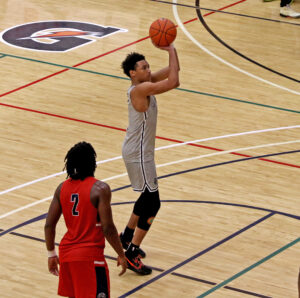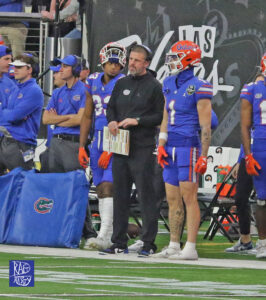Choosing a National Champion… with analytics
4 min read
Gonzaga is the favorite to win the national championship but how do they stack up against analytics.
Once the 2021 NCAA Tournament bracket was released on Sunday, millions of people made their picks. Some made their picks based on their fan allegiance, some by choosing high seeds, others by picking upsets but did any of you look at the hidden figures?
For example, did you know over the past 20 years, 14 of the 20 champions have been one seeds? Or that only once in the last 20 years, has a champion with just one NBA prospect won the title. What about that most head coaches (18 of the last 20) have coached at least 10 seasons before winning a ring?
DraftNasty’s Troy Jefferson invented a model and took a peek at the past 20 collegiate champions to see if the numbers could tell a story and to predict a champion and Final Four contenders.
In this analysis, we first sought to look at a college basketball team as a whole: offensive production, defensive production, impact of a head coach, scheduling impact, seed impact and the importance of talent (future NBA prospects).
As you can see by our rows (spreadsheet attached at the bottom), we measured these figures with points scored, points against, players experience, seeds that won the championship and future pros.
We found that a typical championship team over the past 20 years fits a certain profile:
- Usually a 1 seed
- An experienced head coach (coached 10 seasons before a title)
- A roster that has on average 1.65 years of exp.
- Around 4-5 future NBA players (players that play at least one game in the NBA)
- 4 players that average double figures
- Plays about a top 15 strength of schedule
- Is either top 50 nationally in points scored OR top 50 in points against… interestingly enough, rarely is a team dominant in both areas. The 2011-2012 Kentucky Wildcats and 2006-2007 Florida Gators were the only teams to rank top 25 in both and win a title.
Based on this criteria, here’s how the top seeds fared. (Note: red- means a team failed to meet a metric.)
Gonzaga
- A 1 seed
- Experience coach- Mark Few
- Roster has 1.6 years of exp. (just barely missed the cutoff)
- Corey Kispert, Drew Timme, Jalen Suggs and Andrew Nembhard could play at the next level
- Exactly 4 players that averaged double figures
- 107 in SOS
- No. 1 in points scored per game
Michigan
- A 1 seed
- First year head coach in Juwan Howard
- Roster has 2.2 years of exp.
- Hunter Dickinson, Franz Wagner and Isaiah Livers could be future pros but after that do you think Eli Brooks and Mike Smith can make it as undersized guards?
- 3 players averaging double figures
- 12th in SOS
- Doesn’t rank in the top 50 in points scored or points against
Baylor
- A 1 seed
- Experience coach- Scott Drew
- Roster has 1.9 years of exp.
- Jared Butler, MaCio Teague, Davion Mitchell and Jonathan Tchamwa Tchatchoua could become pros
- 3 players averaging double figures
- 87th in SOS
- Ranks 3rd in points scored per game
Illinois
- A 1 seed
- Brad Underwood has only been a head coach since 2013
- Roster has 1.6 years of exp.
- Kofi Cockburn, Ayo Dosunmu and possibly Adam Miller could become future pros but I struggle to see a fourth
- 3 players averaging double figures
- 9th in SOS
- Ranked 15th in points scored per game
By our criteria, Gonzaga and Baylor would be the favorite to win the title with five of the seven boxes checked. Again, Gonzaga was a fraction away from checking six of the seven boxes and remember they defeated Kansas, West Virginia and Iowa in the non conference but their conference hurt their overall SOS.
Interestingly enough though, West Virginia was a sleeper team we found. The Mountaineers have a veteran head coach in Bob Huggins, a trio of guards and Derek Culver, who not only average double figures but could crack a NBA roster and rank in the top 25 in SOS. As well as top 50 in points scored per game and a roster that returned 73 percent of last year’s production.
It’s important to remember that SOS is a skewed stat toward the Big Ten conference since the league was so dominant in 2020-2021, claiming 9 total tournament spots. And don’t forget outliers like the 2013-2014, UCONN Huskies can happen. However, do any of the teams have guards like Shabazz Napier or Kemba Walker that can take over the tournament? Illinois’ Ayo Dosunmu and Oklahoma State’s Cade Cunningham can. If not, our metric says Gonzaga, West Virginia and Baylor are solid bets. While the East and Midwest region could claim a Cinderella spot.
| Winners | Conf. | Coaches | Seed | Player yrs. of exp. | NBA players | Players that avg. 10+ PPG | PPG (rank) | P-Against-PG (rank) | SOS |
|---|---|---|---|---|---|---|---|---|---|
| Virginia | ACC | Tony Bennett | 1- South | 1.6 | 3 | 3 | 210 | 1 | 23 |
| Villanova | Big East | Jay Wright | 1- East | 1.6 | 5 | 6 | 1 | 114 | 10 |
| UNC | ACC | Roy Williams | 1- South | 1.9 | 4 | 4 | 12 | 129 | 7 |
| Villanova | Big East | Jay Wright | 2- South | 1.7 | 4 | 6 | 57 | 15 | 17 |
| Duke | ACC | Mike Krzyzewski | 1- South | 1.1 | 8 | 4 | 6 | 111 | 6 |
| UCONN | Big East | Kevin Ollie | 7- East | 2 | 1 | 3 | 143 | 63 | 14 |
| Louisville | Big East | Rick Pitino | 1- Midwest | 1.7 | 4 | 2 | 29 | 21 | 10 |
| Kentucky | SEC | John Calipari | 1- South | 0.8 | 7 | 5 | 15 | 25 | 18 |
| UCONN | Big East | Jim Calhoun | 3- West | 0.9 | 3 | 2 | 75 | 84 | 6 |
| Duke | ACC | Mike Krzyzewski | 1- South | 2 | 7 | 3 | 28 | 28 | 9 |
| UNC | ACC | Roy Williams | 1- South | 2 | 7 | 5 | 2 | 285 | 18 |
| Kansas | Big 12 | Bill Self | 1- Midwest | 2 | 7 | 4 | 13 | 21 | 13 |
| Florida | SEC | Billy Donovan | 1- Midwest | 1.9 | 6 | 5 | 11 | 43 | 38 |
| Florida | SEC | Billy Donovan | 3- Midwest | 1.2 | 5 | 5 | 22 | 51 | 64 |
| UNC | ACC | Roy Williams | 1- Syracuse | 2 | 6 | 5 | 1 | 218 | 3 |
| UCONN | Big East | Jim Calhoun | 2- Phoenix | 1.5 | 6 | 3 | 17 | 56 | 25 |
| Syracuse | Big East | Jim Boeheim | 3- East | 1 | 2 | 4 | 14 | 166 | 17 |
| UMD | ACC | Gary Williams | 1- East | 2.2 | 4 | 4 | 5 | 176 | 14 |
| Duke | ACC | Mike Krzyzewski | 1- East | 1.7 | 5 | 5 | 2 | 149 | 5 |
| MSU | Big Ten | Tom Izzo | 1- Midwest | 2.2 | 4 | 4 | 90 | 8 | 9 |









